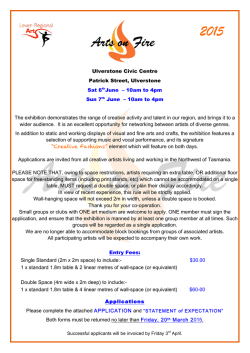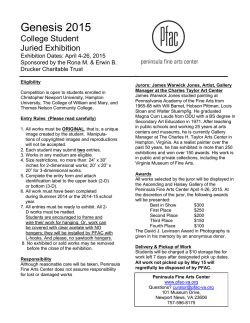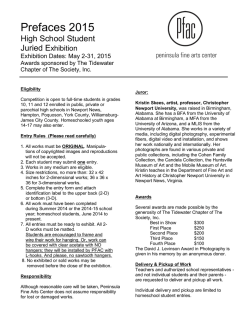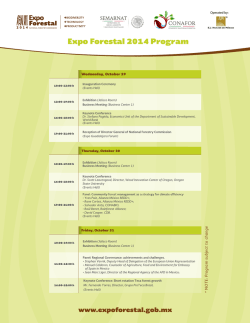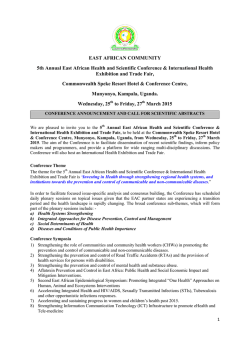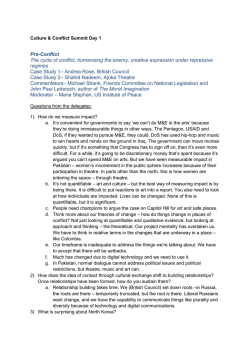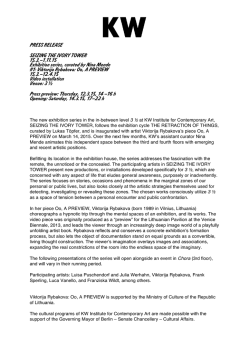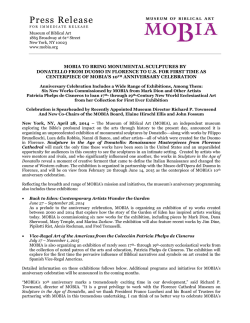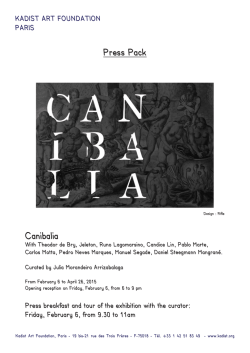
10365 Islington Avenue, Kleinburg, Ontario L0J 1C0 Phone: 905.893
FOR IMMEDIATE RELEASE McMichael to Present Groundbreaking Exhibition Vanishing Ice: Alpine and Polar Landscapes in Art, 1775-2012 December 9, 2014 Kleinburg, ON—On January 31, 2015, the powerful and provocative exhibition Vanishing Ice: Alpine and Polar Landscapes in Art, 1775-2012 will open at the McMichael Canadian Art Collection. Since debuting in 2013 at the Whatcom Museum in Bellingham, Washington, the exhibition has garnered attention for its unique interweaving of art, history, and science. Showcasing the beauty and fragility of Earth’s frozen frontiers through the eyes of artists, writers, and naturalists over a period of more than 200 years, the exhibition offers a unique take on the timely subject of climate change. Vanishing Ice features over seventy works including drawings, prints, paintings, photographs, videos, and installations by fifty artists from twelve countries. Among these historical and contemporary artists are: Ansel Adams, Lita Albuquerque, James Balog, Thomas Hart Benton, David Buckland, Gustave Doré, Lawren Harris, Isaac Julien, Kahn & Selesnick, Rockwell Kent, Paul D. Miller (aka DJ Spooky), Alexis Rockman, Camille Seaman, and Spencer Tunick. The exhibition unfolds thematically, geographically, and chronologically, moving from alpine to Arctic and Antarctic landscapes. The idea for Vanishing Ice grew out of curator Barbara Matilsky’s doctoral dissertation, written thirty years ago about the sublime landscapes of French artist-naturalist-explorers who were among the first to depict the poles and mountain glaciers. As Matilsky became aware of the increasing number of contemporary artists who were venturing to the Arctic and Antarctic, she saw an opportunity to compare historical and contemporary depictions of these rapidly changing landscapes, as epitomized by the juxtaposition of Arthur Oliver Wheeler’s 1917 image of the Athabasca Glacier in Jasper National Park and Gary Braasch’s 2005 photograph of the same location. “I am hoping that Vanishing Ice will stimulate a new appreciation for alpine and polar landscapes by revealing their significance for both nature and culture,” said exhibition curator Barbara Matilsky from the Whatcom Museum. “In the past, artists and naturalists expanded the public's awareness of Earth's icy frontiers. Today, artists continue to collaborate with scientists, motivated by the belief that art will help people to visualize the accelerating effects of climate change. They awaken the world to both the beauty and increasing vulnerability of ice, which is critical for biological and cultural diversity. Their work will hopefully inspire activism on the regional and national levels to make the requisite policy changes that will bring Earth back into balance.” The McMichael is the exhibition’s final stop on a tour that included the Whatcom Museum; the El Paso Museum in Texas; and most recently the Glenbow Museum in Calgary. “The McMichael nurtures a special interest in exploring the intersection of art and nature, and encouraging meaningful dialogue about the environment,” said Dr. Victoria Dickenson, Executive Director and CEO of the McMichael. “Vanishing Ice is both a beautiful glimpse of some of the most remote and fragile ecosystems, and a call to action on what many people hold to be the defining issue of this generation.” Vanishing Ice, which will span the McMichael’s upper level of gallery spaces, will be complemented by an exhibition based on the McMichael’s permanent collection of works related to the Arctic, opening on February 14, 2015. The installation will include paintings and drawings by members of the Group of 10365 Islington Avenue, Kleinburg, Ontario L0J 1C0 Phone: 905.893.1121 • Fax: 905.893.2588 • www.mcmichael.com Seven, including Lawren Harris—famed for his depiction of icebergs and glaciers—and works by Inuit artists, including Tim Pitsiulak. The McMichael will also offer programming in conjunction with these two exhibitions, including a Vanishing Ice Family Festival on Sunday, February 8, and again on Sunday, February 15 and Monday, February 16, featuring school and community events, including a snowshoe hike on the McMichael’s Humber River Valley site, and an opportunity to see Melting Ice, a special installation on the McMichael grounds by Nepalese-American artist Jyoti Duwadi, who will be present at the event. On Sunday, March 15 at 1:30 pm, the gallery will host a public talk by award-winning wildlife photographer Daisy Gilardini and internationally collected watercolourist David McEown, who have joined a combined thirty-seven expeditions to the Arctic and thirty-eight to Antarctica over the past decade. The exhibition will be on display at the McMichael until April 26, 2015. Vanishing Ice: Alpine and Polar Landscapes in Art, 1775-2012 is organized by the Whatcom Museum. Major funding for the exhibition has been provided by the Paul G. Allen Family Foundation and the National Endowment for the Arts with additional support from the Norcliffe Foundation, the Washington State Arts Commission, and the City of Bellingham. About the McMichael Canadian Art Collection The McMichael Canadian Art Collection is an agency of the Government of Ontario and acknowledges the support of the Ministry of Tourism, Culture and Sport, and the McMichael Canadian Art Foundation. It is the foremost venue in the country showcasing the Group of Seven and their contemporaries. In addition to touring exhibitions, its permanent collection consists of almost 6,000 artworks by Canadian artists, including paintings by the Group of Seven and their contemporaries, as well as First Nations, Métis and Inuit artists. The gallery is located on 100 acres of northern landscape and hiking trails at 10365 Islington Avenue, Kleinburg, north of Major Mackenzie Drive in the City of Vaughan. For more information: mcmichael.com. -30Media Contact: Rachel Weiner Media Relations and Communications Coordinator McMichael Canadian Art Collection 905.893.1121 ext. 2210 [email protected] 10365 Islington Avenue, Kleinburg, Ontario L0J 1C0 Phone: 905.893.1121 • Fax: 905.893.2588 • www.mcmichael.com
© Copyright 2025
